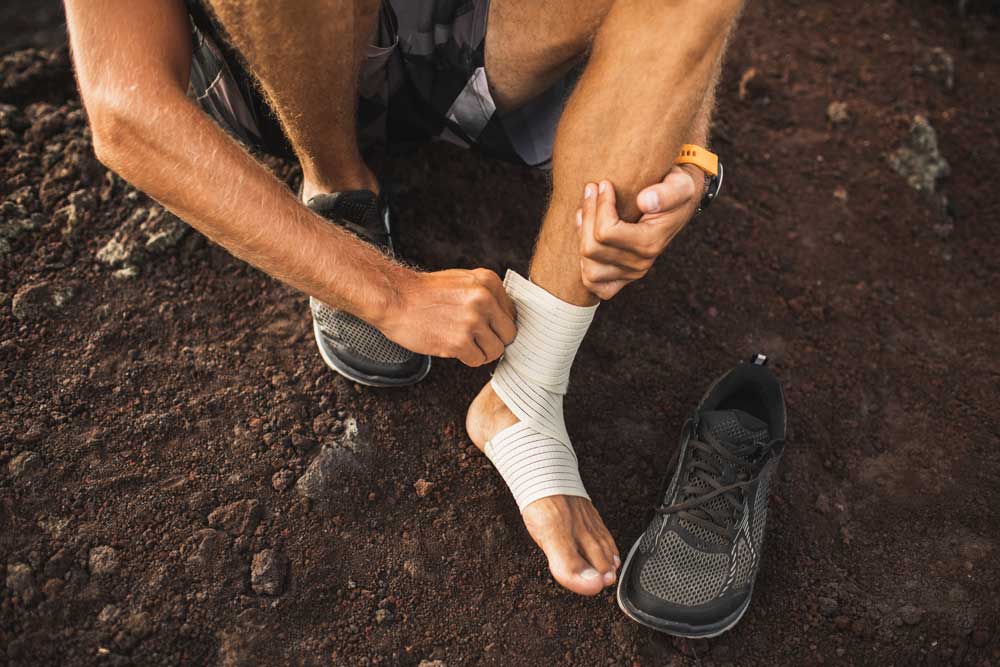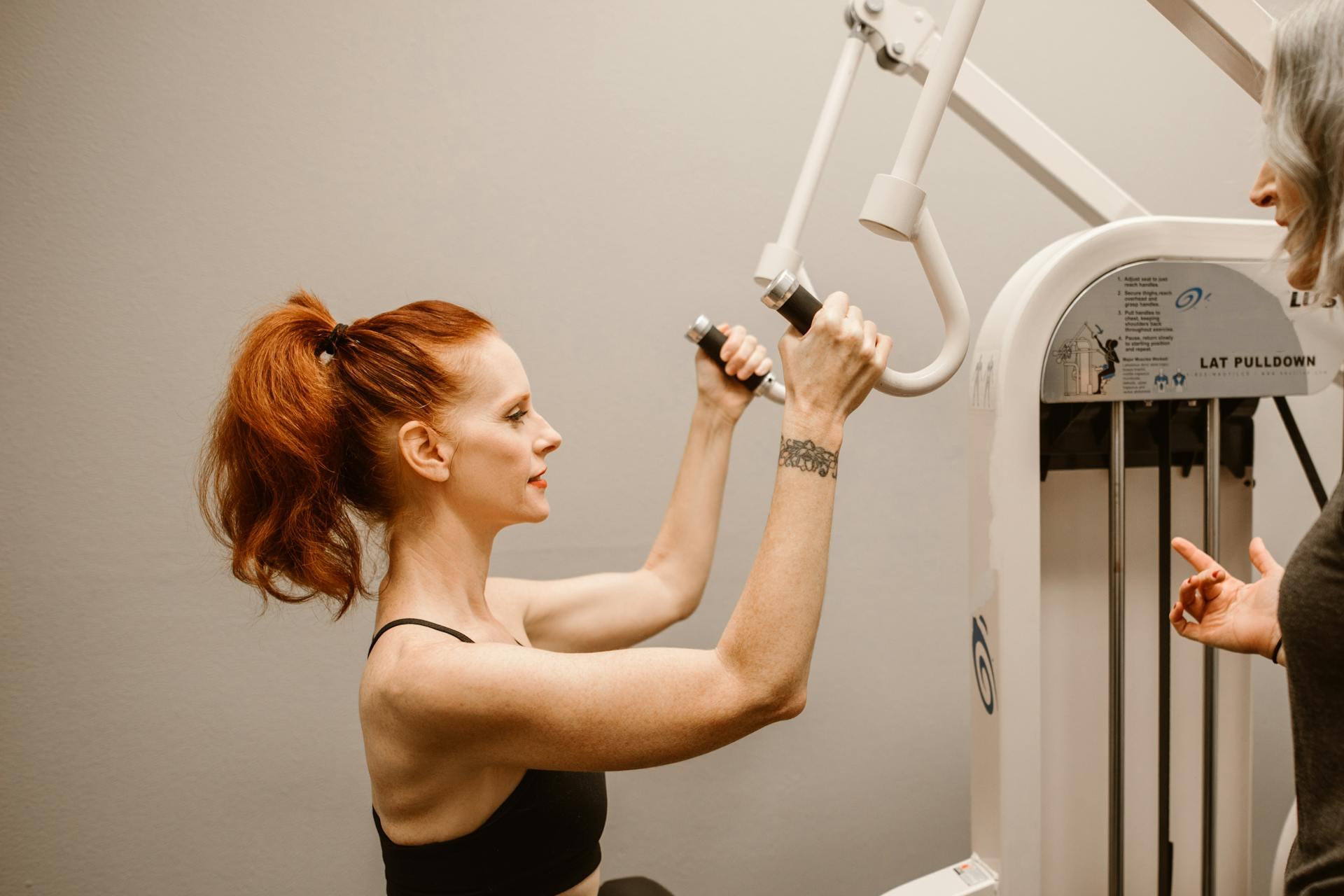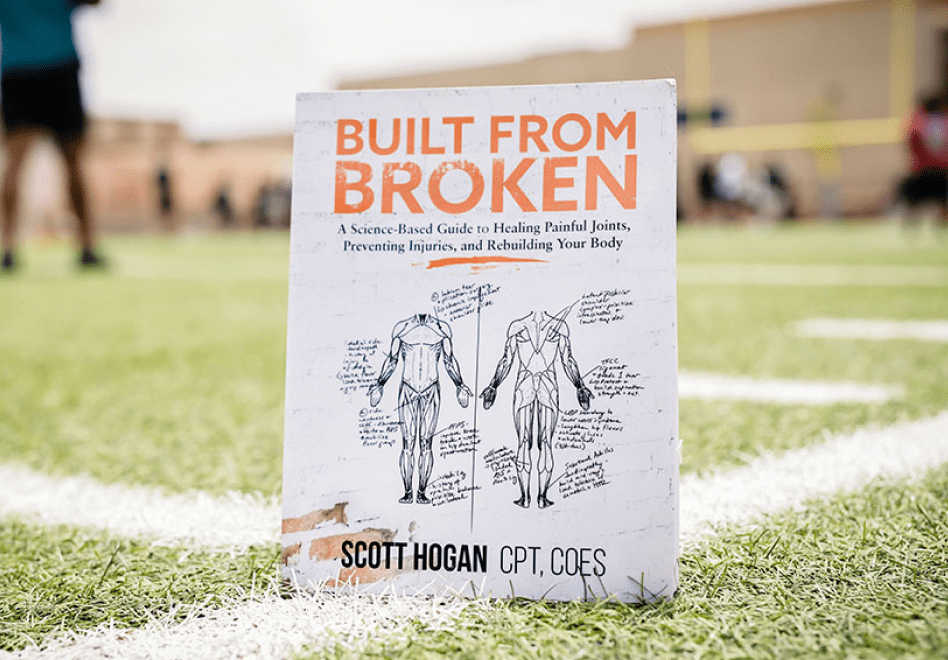
Be built (to last).
The right supplements can help you recover naturally and build a resilient body.

Supplement Quiz
Take this short quiz to discover the perfect supplements for your needs and goals.
About SaltWrap

Built from Broken
Get the best-selling book from SaltWrap founder, Scott Hogan, and start rebuilding today.
What Is Medical Exercise?

By Chris Dempers, ASCM-EP®, MES
It’s perhaps the most common question I get in my profession: “What is medical exercise?”
I’m sure most of the clients I’ve worked with had never heard of it before meeting me. If you’re reading this now, you’re likely in the same boat.
You may have heard of it but don’t know exactly what it is or how it differs from corrective exercise, physical therapy, or conventional personal training.
No worries. I’m going to tell you everything you need to know about medical exercise. By the end of this article, I’m sure you’ll see how perfectly it aligns with SaltWrap’s core mission of helping people come back stronger.
Let’s get started.

Medical Exercise 101
Medical exercise is a niche market. Not many people know it exists, and even fewer know what it is. (For instance, some might hear the term and assume it means exercise prescribed by a doctor.)
Here’s how I’d define medical exercise in practical terms:
Medical exercise bridges the gap between healthcare and fitness.
Ok. What does that mean?
Here’s a hypothetical example that puts it in a real-world context.
Picture an active 70-year-old man living his best life in sunny Florida. He has a history of heart problems, but he’s otherwise healthy and likes to keep active by playing golf.
Let’s imagine that he recently changed his medication. Today is the first day he’s been golfing since then. He’s been playing a good game so far, but he’s felt a bit dizzy.
Now he’s feeling lightheaded.
Before he can think, “It’s probably just the sun,” he faints. When he falls, unfortunately, he breaks his shoulder.
He has surgery. He completes physical therapy. But he still has some work to do before he can hit the links with his friends.
He needs to rebuild strength in his shoulder. He also wants to strengthen his core and stabilizer muscles to improve his game. But he needs to do this while being mindful of his heart condition.
That’s where a medical exercise specialist would come in.
How Is a Medical Exercise Specialist Different From a Personal Trainer?
As a medical exercise specialist, I develop and implement exercise programs for clients with specific medical conditions. My job is to help clients achieve realistic health and fitness goals while considering the worst-case scenario.
In other words, my objective is to help a client “graduate” to a regular personal trainer. I work within a network of elite physical therapists and personal trainers, which makes the “graduation” process seamless.
Clients love this approach because it pairs them with the right person at the right time. It also allows them to work toward – and reach – a realistic goal.
This begins with a comprehensive evaluation.
Unlike a traditional personal training assessment, which might only examine body composition and exercise output, a medical exercise evaluation must consider the totality of the client’s physical fitness and medical history.
For instance, I will evaluate a client’s range of motion, flexibility, and balance. (Balance is critical for aging populations, as well as stroke and Parkinson’s patients.)
Next, I’ll do a head-to-toe rundown of the patient’s unique situation.
Are they currently taking any medications? What does their daily living look like? (For instance, are they active every day? Do they have difficulty getting around their home or doing household tasks?)
What are their goals?
More importantly, what are realistic goals given their unique circumstances?

What Does Medical Exercise Look Like?
Typically, the exercise will look very similar to what they might have done in physical therapy – and to what they will do with a personal trainer. We work our way up from the lower levels of exercise to the higher levels.
To use a skiing analogy, think of physical therapy as the bunny slopes or green hills. Medical exercise is the intermediate runs or blue hills. Personal training and performance training will go from the intermediate all the way up to double black diamond.
We will utilize almost everything in the fitness center, from resistance bands to free weights. It will all depend on where the client is, how they are progressing, and how far they still need to go to reach their goal.
For example, a client might have used resistance bands in physical therapy to perform rotator cuff-strengthening exercises. But now, I might increase the strength of the band. Or I might take a client to the cable machine and have them perform crossovers.
In this case, they’d be performing an exercise with continuous resistance rather than a gradual increase in tension throughout the movement, as they might’ve experienced in physical therapy.
We are familiar with the tools used in physical therapy and at the higher levels of physical and performance training. We are smack dab in the middle of it all. We are the Jack of all trades on your wellness journey.
It’s our job to understand the delicate nature of physical and occupational therapy and the brute force and effort that go into physical and performance training.
We must understand when it is appropriate for our clients to move forward with more demanding exercise, and when they would benefit from another round of physical therapy – or perhaps further evaluation from a physician.
Let’s take a look back at the hypothetical example I gave earlier. Our golfing buddy.
In his case, I’d do everything possible to get our friend back to golfing at pre-accident levels. And without putting his heart – or anything else – at risk.
That last part is critical.
If our friend’s goal were to start swinging a golf club the week after surgery, that likely wouldn’t happen. But if his goal is to work hard to eventually come back stronger and better than ever, then I’m all in.
By the time he graduates to training with a personal or performance trainer, he’ll be fully recovered from his injury and healthy enough to return to golfing. And he’ll be ready to take his game to the next level.
Putting It All Together
Medical exercise bridges the gap between healthcare and fitness. It can be a game changer for anyone with preexisting medical conditions who has been sidelined from doing what they love.
There can be a lot of overlap between medical exercise, corrective exercise, physical therapy, and even traditional personal training. But it’s not the same.
The main difference is that every last detail of every workout, from the exercises selected to the number of repetitions performed, revolves around the client’s unique needs and goals.
So, if you have a preexisting medical condition and have faced a setback or injury, know that you can come back stronger.
If you want to ensure that you get the best possible results so that you can reach your goals, working with a medical exercise specialist might be the best option you didn’t realize you had.

Chris Dempers, ASCM-EP®, MES
Chris Dempers, ASCM-EP®, MES, runs the health and fitness department for a South Florida hospital chain that specializes in medical fitness. His specialties include orthopedic injuries, fall prevention and balance with aging populations, and fitness protocols for Parkinson’s patients.
Chris is a founding member of SaltWrap's Clinical Advisory Board.
Founder: Scott Hogan

I created SaltWrap to bring together the most practical ideas in therapeutic sports nutrition, corrective exercise, and functional fitness — with the goal of keeping you (and myself) strong, mobile, and built to last.
I've worked as an A.C.E. Certified Personal Trainer, Orthopedic Exercise Specialist, and nutritional supplement formulator.
But more importantly — I've spent most of my life battling injuries, joint pain, and just being plain beat up. So I know what it's like to struggle toward fitness goals.
SaltWrap is here to push you through injuries, setbacks and perceived physical limitations. To a place beyond what you think you're capable of. Sign up here to stay in the loop.
Learn more about my best-selling injury prevention and recovery book, Built from Broken.






